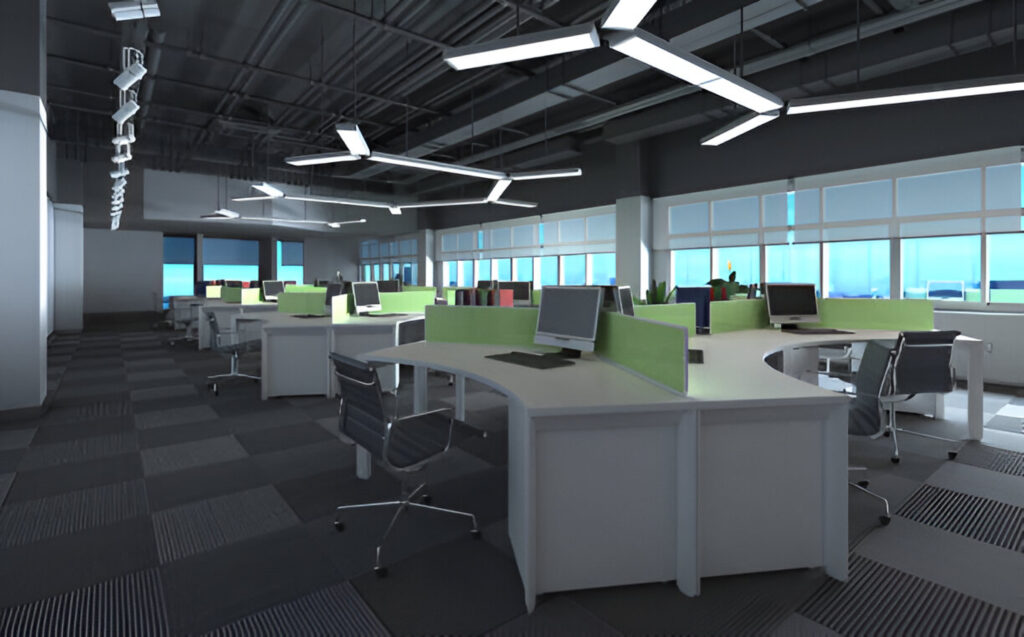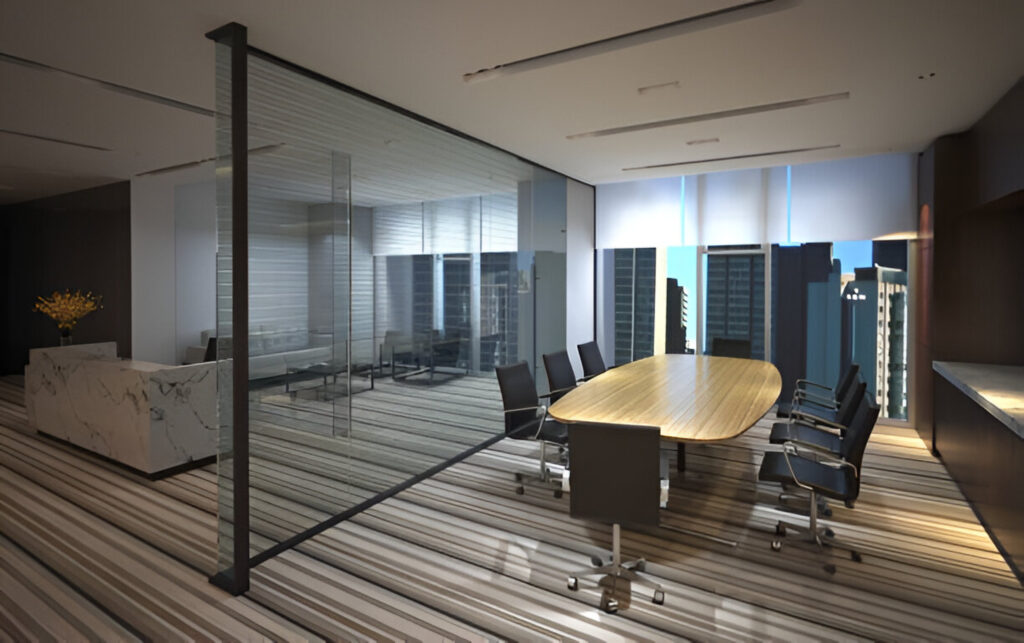Cutting-edge lighting controls are now essential for comfort, efficiency, and creativity in the ever-changing world of commercial settings. Modern technology is integrated into these systems to meet a variety of demands, going beyond the simple purpose of lighting. Advanced lighting controls have a wide range of significant applications in commercial settings, from increasing productivity to improving energy efficiency.
Types of Advanced Lighting Management systems
Advanced lighting controls come in various forms, each tailored to specific needs and environments. Understanding these types is crucial for making informed decisions.
- Networked Lighting Controls
Networked lighting controls connect multiple fixtures and sensors, enabling centralized management and automation. These systems can adjust lighting based on occupancy, daylight availability, and other factors, optimizing energy use.
- Occupancy & Vacancy Sensors
Occupancy sensors activate lighting when movement is detected, ensuring spaces are lit only when in use. Vacancy sensors, conversely, require manual activation but will turn off lights automatically when the space is vacated, further conserving energy.
- Daylight Harvesting Systems
Daylight harvesting systems use sensors to measure natural light levels and adjust artificial lighting accordingly. By maximizing the use of natural daylight, these systems enhance comfort while significantly reducing energy consumption.
- Dimming and Color Tuning Controls
Dimming controls allow for the adjustment of light intensity, providing the right ambiance and saving energy. Color tuning controls go a step further, enabling changes in light color temperature to suit different tasks and times of day, thus supporting circadian rhythms and enhancing well-being.
Key Benefits of Advanced Lighting Management Systems
The benefits of advanced lighting controls extend beyond mere energy savings, impacting various aspects of commercial operations.
- Energy Efficiency and Cost Savings
By optimizing light usage, advanced controls can drastically reduce energy consumption and utility costs. This efficiency not only contributes to sustainability goals but also offers significant financial savings over time.
- Enhanced Occupant Comfort and Productivity
Properly controlled lighting improves visual comfort and reduces glare, creating a more pleasant environment. This enhancement leads to increased productivity and overall well-being for occupants, whether they are employees, customers, or guests.
- Increased Flexibility and Customization
Advanced lighting systems offer high levels of customization, allowing for tailored lighting scenes and schedules. This flexibility ensures that lighting can adapt to different activities and preferences, enhancing the overall user experience.
- Improved Safety and Security
Automated lighting controls can enhance safety and security by ensuring that areas are well-lit when needed. Motion-activated lights and scheduled lighting can deter unauthorized access and provide a safer environment for all occupants.
Designing and Implementing Lighting Management Systems
Successful implementation of advanced lighting controls requires careful planning and execution.
Assessing the Needs of the Space
Understanding the specific needs of the commercial space is the first step. This assessment includes analyzing the purpose of the space, user behavior, and existing infrastructure to identify the most suitable lighting solutions.
- Choosing the Right Control Systems
Selecting the appropriate control systems involves considering factors such as scalability, compatibility, and ease of use. The chosen systems should align with the space’s operational goals and long-term plans.
- Installation Best Practices
Proper installation is critical for the performance and longevity of lighting controls. This process involves ensuring correct sensor placement, wiring integrity (for wired systems), and robust network connectivity (for wireless systems).
- Ensuring Compatibility with Existing Infrastructure
Integrating advanced lighting controls with existing infrastructure requires careful planning to avoid conflicts and ensure seamless operation. Compatibility with other systems, such as HVAC and security, should be verified and accounted for.

Case Studies and Real-World Applications
Examining real-world applications provides valuable insights into the benefits and challenges of advanced lighting controls.
- Corporate Office
In corporate environments, advanced lighting controls enhance productivity and reduce operational costs. Automated systems adjust lighting based on occupancy and daylight, creating an optimal working environment.
- Retail Spaces
Retail spaces benefit from dynamic lighting controls that enhance the shopping experience. Adaptive lighting can highlight products, create appealing atmospheres, and respond to changing natural light conditions.
- Hospitality and Entertainment Venues
In hospitality and entertainment venues, lighting controls create memorable experiences. From mood lighting in restaurants to dynamic stage lighting in theaters, these systems contribute to the overall ambiance and guest satisfaction.
- Educational Institutions
Educational institutions utilize advanced lighting controls to create conducive learning environments. Automated lighting ensures classrooms are well-lit during lectures and dimmed during presentations or multimedia sessions.
Key Considerations
Implementing advanced lighting controls comes with its own set of challenges that must be addressed.
- Initial Investment vs. Long-Term Savings
The initial cost of advanced lighting systems can be high, but the long-term savings in energy and maintenance often justify the investment. A detailed cost-benefit analysis is essential for making informed decisions.
- Addressing Compatibility Issues
Ensuring compatibility with existing systems and infrastructure is crucial to avoid operational disruptions. Compatibility checks and thorough planning can mitigate potential issues.
- Managing System Complexity
Advanced lighting controls can be complex, requiring specialized knowledge for installation, programming, and maintenance. Investing in training and hiring experts can help manage this complexity effectively.
- Ensuring User Training and Adoption
For successful implementation, users must be trained on how to operate and benefit from advanced lighting controls. User adoption is key to realizing the full potential of these systems.
Future Trends in Lighting Management Systems
The future of lighting control systems is promising, with several trends shaping the industry.
- Evolution of Smart Lighting Technologies
Smart lighting technologies continue to evolve, offering more intuitive and autonomous systems. Advances in sensors, connectivity, and AI will drive the next generation of lighting controls.
- Increasing Role of Sustainability
Sustainability is becoming a central focus, with lighting controls playing a vital role in reducing carbon footprints. Innovations in energy-efficient lighting and renewable energy integration will further this goal.
- Innovations in Human-Centric Lighting
Human-centric lighting, which considers the impact of lighting on human health and well-being, is gaining traction. Future systems will increasingly incorporate features that support circadian rhythms and improve mental and physical health.
- Anticipated Market Growth and Opportunities
The market for advanced lighting controls is expected to grow significantly, driven by technological advancements and increasing demand for energy efficiency. This growth presents numerous opportunities for innovation and investment.
Lighting management systems are transforming commercial spaces, offering multiple benefits from energy savings, enhanced occupant comfort, operational efficiency, and cost effectiveness. As technologies continue to evolve, these systems will become even more integral to building management and sustainability efforts. Embracing lighting management systems is not just a trend but a forward-looking strategy that can yield substantial returns. Vallect is at the forefront of this transformation, providing the best lighting management systems for commercial spaces to ensure you stay ahead in this innovative landscape.
Looking to Design Lighting Automation solutions for your space, Get in touch us today at in**@*****ct.com



